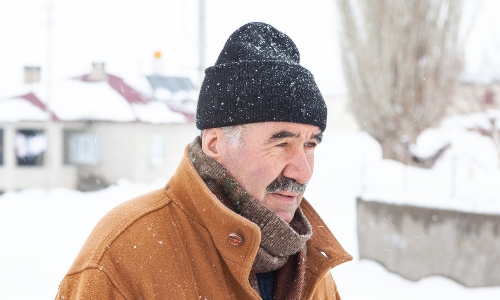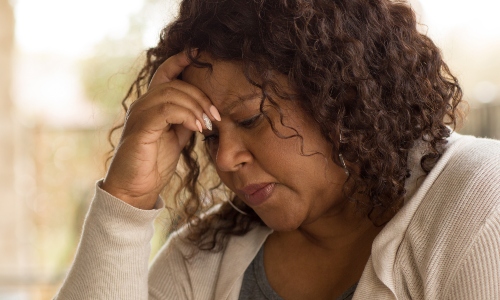Malnutrition and dehydration are common conditions that usually present together in older people, and are frequently under-recognised and undertreated.
Affecting the function and recovery of every organ system, malnutrition is a cause and effect of illness and is a silent and, all too often, hidden problem that can lead to long-term health issues in otherwise healthy and independent older people.
The weight loss is usually unintentional and often goes unnoticed until malnutrition starts to seriously undermine someone’s health and wellbeing. There are multiple causes and every individual’s story is unique.
A growing concern
It is estimated that around 1 in 10 people over the age of 65 are either malnourished or at risk of malnutrition – and that number is set to rise as the older population increases.
Despite this, awareness of malnutrition among older people, their families and healthcare professionals remains relatively low, and while malnutrition is not an inevitable part of ageing, common medical, physical and social risk factors that occur in later life can cause older people to be more susceptible to becoming malnourished. Unhelpfully, there is a myth that it’s ‘normal’ to get thinner as we age, associated with outdated perceptions that becoming frail is all but inevitable in later life.
Regardless of awareness-raising and clinical guidance being available, there is patchy availability of care and support services to prevent, identify and treat malnutrition. The level of unmet need continues to grow, and it’s now estimated that almost 1.2 million people over 65 don’t get the help they need with essential daily activities.
What causes malnutrition?
Medical, physical and social factors all contribute to the risk of malnourishment.
Disease-related malnutrition arises due to reduced dietary intake, malabsorption, increased nutrient losses or altered metabolism, while physical or disability-related risk factors can occur for many reasons. These may be related to underlying health problems – for example, being diagnosed with a new health condition or experiencing a long-term condition such as COPD, some cancers and liver disease, sight loss, arthritis, and other disabilities. Dentition is also a major factor as pain, loose teeth or denture problems can prevent people from eating, chewing and swallowing.
An increasing number of older people are also living with a cognitive impairment, such as dementia. This can change the way someone eats, including forgetting to eat and drink, a reduced sense of satiety, or finding more complex meals too overwhelming. Food preferences can change dramatically, meaning previously enjoyed food goes uneaten. This can be a challenge for carers in knowing how best to support the person they care for, particularly in the case of those who are often very active. The impact of these challenges also makes it difficult for older people to plan, shop, prepare and cook food, and the most overlooked difficulty is the person’s ability to get the food from the plate to the mouth and eat independently.
Social risk factors linked to malnutrition are often the most complicated and can encompass many challenges – for example, practical limitations, interest in food, motivation, the ability to eat unaided, the skills and abilities to plan, shop and cook, social isolation and loneliness.
Loss of appetite can also be caused by cumulative losses over years, along with life transitions, bereavement, narrowing of social groups, living on a low income and becoming a carer in later life.
Understanding the challenges
Discovering how and when older people become malnourished can be difficult as, despite the availability of nationally validated screening tools, the information is not universally collected or collated. Support with eating and drinking is frequently overlooked, and is not seen as a priority in prevention – often because we don’t consider how vital food and eating is for our pleasure, social interactions and our wellbeing, as well as our nutritional health.
Much of the data available on malnutrition in later life therefore comes through screening on admission to hospital. This is useful in part because it can provide indications to the prevalence of malnutrition in the community, but the impact of malnutrition is not felt evenly across the country. Poorer, older populations have high rates of malnutrition, which means higher costs for some integrated care boards. There is significant evidence that costs are reduced overall when malnutrition is treated or prevented altogether.
Unfortunately, a decrease in budget for social care for older people has had a negative impact on providers’ ability to support older people at risk and prevent the older person from becoming malnourished.
Instead it has forced the focus onto carers, who may well be caring for someone in crisis and could be one step away from crisis themselves. We must acknowledge the vital role that carers have and support them to feel able to help tackle malnutrition in both the person they care for and for themselves.
Finding solutions
Raising public awareness of malnutrition and providing professional training are the first steps to finding a solution for the issue. Information must be freely and easily available to empower older people, their families, carers and professionals.
Age UK is working in partnership with the Malnutrition Task Force to raise this awareness and provide information. Simple tools like the Patients Association Nutrition Checklist can be used to help start a conversation about eating and drinking, and signpost people to support. Age UK also produce a Healthy living guide to help older people stay active, independent and eat and drink in a way to keep them healthier for longer.
Validated screening tools are also available and have been endorsed by multiple organisations, such as the ‘Malnutrition Universal Screening Tool’ (‘MUST’). Elsewhere, BAPEN have developed an online self-screening tool so people can check if they or someone they know are at risk.
There must be a holistic, joined-up system of health and social care for older people living with malnutrition that looks at various methods of nutritional support, and offers help to carers and families too. If the way in which we address malnutrition does not change, we can only expect the situation to worsen for the older people at risk of malnutrition and for those who care for them.
Information you can trust
Our monthly professionals newsletter covers a range of information and advice topics, helping professionals offer older people the most relevant and up-to-date guidance.





